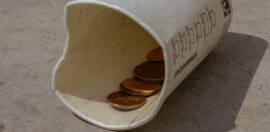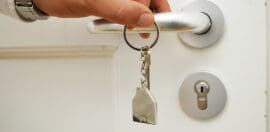New Productivity Commission data prompts calls for more housing investment

20 January 2021 at 4:30 pm
Homelessness groups warn that Australia’s housing system remains in urgent need of repair
More than half of low-income private renters are spending unsustainable amounts on rent, despite the temporary boost to income support reducing the number of households in rental stress by more than 150,000.
New data from the Productivity Commission’s Report on Government Services 2021 shows that 50.2 per cent of low-income households privately renting face rental stress – defined as paying more than 30 per cent of their income towards rent.
Mission Australia executive Ben Carblis said this showed far too many people were struggling to pay rent and at risk of experiencing homelessness.
He said Australia’s housing system was “in urgent need of repair and investment”.
“With the severe shortage of social and affordable homes, too many people simply can’t find a safe, secure and affordable home,” Carblis said.
“This leads to people and families facing terrible choices between paying for food, bills, the rent or even medication and missing out on other essentials.”
The charity renewed its calls for the government to build 30,000 new social houses over a four-year period through the Social Housing Acceleration and Renovation Program (SHARP) proposal.
This $7.2 billion proposal includes funding to build new homes and $500 million to renovate existing properties, with analysis showing this could create up to 18,000 full-time equivalent jobs a year.
Carblis said there was an urgent need for more social homes to help end homelessness in Australia.
“Investment in building, upgrading and improving social and affordable housing will support economic recovery, improve social and economic outcomes for people on lower incomes, and will help Australia take great strides in helping to end homelessness,” he said.
Carblis added that Mission Australia continued to be a staunch advocate for a national plan to end homelessness and long-term government and private investment in social and affordable homes.
Coronavirus supplement helps lessen rental stress
The report also highlighted the positive impact of the temporary doubling of welfare payments through the coronavirus supplement.
Data shows in June 2020, there were 155,765 fewer households experiencing rental stress compared with the previous year.
The number of people on Commonwealth Rent Assistance (CRA) experiencing rent stress also decreased by 11.1 per cent compared to 2019, while those on CRA facing extreme rent stress – paying more than 50 per cent of income on rent – fell by 5.4 per cent.
Jenny Smith, the chair of Homelessness Australia, said this data highlighted just how life changing increased income support can be for struggling families.
But she warned that the decision to end the supplement at the start of April would push hundreds of thousands of people to the brink of homelessness.
“[This] data is clear evidence that increasing income support keeps more families safe, housed, and healthy,” Smith said.
“Now is the time for the federal government to take action to reduce homelessness by keeping the increased income support levels, and preventing any more Australians from falling off the edge into homelessness.”







